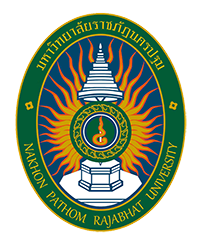 การประชุมวิชาการระดับชาติ ครั้งที่ 16
|
| Title | The Efficacy of Insecticides for Controlling Rice leaffolder (Cnaphalocrocis medinalis (Guenee)) in the Rice Fields of Nakhon Nayok Province |
|---|---|
| Other Titles: | ประสิทธิภาพของสารป้องกันกำจัดแมลงในการควบคุมหนอนห่อใบข้าว (Cnaphalocrocis medinalis (Guenee)) ในพื้นที่จังหวัดนครนายก |
| Authors EN |
|
| Authors TH |
|
| Keywords | Rice,Efficacy,Insecticide,Cnaphalocrocis medinalis (Guenee),Economic threshold level |
| Issue Date | 13-Aug-2024 |
| Publisher | The 16th NPRU National Academic Conference Nakhon Pathom Rajabhat University |
| Abstract | The rice leaffolder, or Cnaphalocrocis medinalis (Guenee), is a major rice insect pest that is frequently found in all of Asia's countries. A severe outbreak may result in upwards of 23.30 percent losses in rice production. Farmers commonly use insecticides as a preventative and eradication method. This study aims to investigate the efficacy of insecticides for controlling rice leaffolder conducted on agricultural fields in the Pak Phli District of Nakhon Nayok Province. An outbreak of rice leaffolder, with an average rice leaf damage rate of 21.86%, was found in rice 50 days after sowing in the dry season of 2024. Eight treatments and three replications were included in the randomized complete block design. Using a motorized backpack mist-blower sprayer, insecticide was applied twice at the rate recommended on the label. The results of the experiment revealed that following two sprayings of the insecticides, the percentage of damaged rice leaves in the sprayed treatment decreased and showed a significant difference from the control treatment. The findings of the first spraying showed that the most efficient insecticides were novaluron 5.67% + indoxacarb 4.56% SC and fipronil 5% SC, at 57.35% and 55.72%, respectively. After the second spray, the highest efficiency was achieved by methoxyfenozide 30% + spinetoram 6% SC and novaluron 5.67% + indoxacarb 4.56% SC, with an efficiency of 86%. The other insecticides had lower efficiency, ranging from 80–83%. The cost of applying insecticides per rai was determined to be as follows: fenobucarb 16% + fipronil 2% EC and fipronil 5% SC (35–36 baht), flubendiamide 24% + thiacloprid 24% SC (83 baht), chlorantranili prole 20% + thiamethoxam 20% WG (102 baht), indoxacarb 9% + emamectin benzoate 1% SC (120 baht), novaluron 5.67% + indoxacarb 4.56% SC (156 baht), and methoxyfenozide 30% + spinetoram 6% SC (163 baht). With this knowledge, once the rice leaffolder outbreak reaches an economic threshold level, decisions can be made on the application of insecticides for managing the outbreak.
|
| ISBN | 978-974-7063-46-2 |
| URI | https://rdi.npru.ac.th/conference16 |